WEASELS RIPPED MY FLESH: COUNTERPOINT #1 AND IMPROVISATIONS
COUNTERPOINT IN EARLIER WORK
Much of Zappa's music has its basis in the single melodic line. The chords are often indicated by their symbols and can vary in each version of a song.
Counterpoint doesn't play an important role in much of his music. When you listen for instance to "Bongo fury" (1975), the little counterpoint you can encounter are some motifs
played by the bass. Hardly any rules apply to Zappa's music however and when you take the little use of counterpoint as characteristic, you will also
find sections showing the opposite, together enough to fill a CD with counterpoint exercises. This section
focuses on the places where he is applying counterpoint and some of its different appearances. For definition purposes:
counterpoint is seen here as any kind of music where more than one more or less individual melodic line is played at the same time.
This section works in conjunction with the "The yellow shark: counterpoint #2" section, this one doing examples from Zappa's earlier work and the latter
fills in the picture with pieces composed in the eighties.
What will this evening bring me this morning
Zappa mostly doesn't use classical forms as fugues and canons with imitation in the melodic lines, but sometimes imitation is
applied. Take the canon set up of "What will this evening bring me this morning", from "200 Motels" (1971). From 1:35
onwards a second voice is singing one bar after the first voice. Or take the little fragment between 1:07 till 1:12 from "Pound for a brown", "Yellow shark" version.
What will this evening bring me this morning, theme (midi file).
What will this evening bring me this morning, canon (midi file).
What will this evening bring me this morning, theme and canon (transcription).
The "What will this evening bring me this morning" sections above are in E. In both cases the bass plays a pattern with E as the central note. In the first
example it's the E alternating with B in a syncopic way. Syncopes also happen at various points in the lead melody. In the second case it's a two-bar pattern with
the bass picking the notes E-F#-E-B. In bar 6 of the first example, the bar where the vocals pause, the organ plays a little chord progression: I-IV-I. In the second
example the keyboards are improvising in the background. Staff 5 represents the brass, playing an E in a rhythmically irregular way. Whereas the form is classical,
the harmonies are less classical. The whole doesn't constitute a sequence of traditional 5th and 7th chords. Instead of that Zappa lets the vocals, accompaniment
and bass mingle freely through the scale of E.
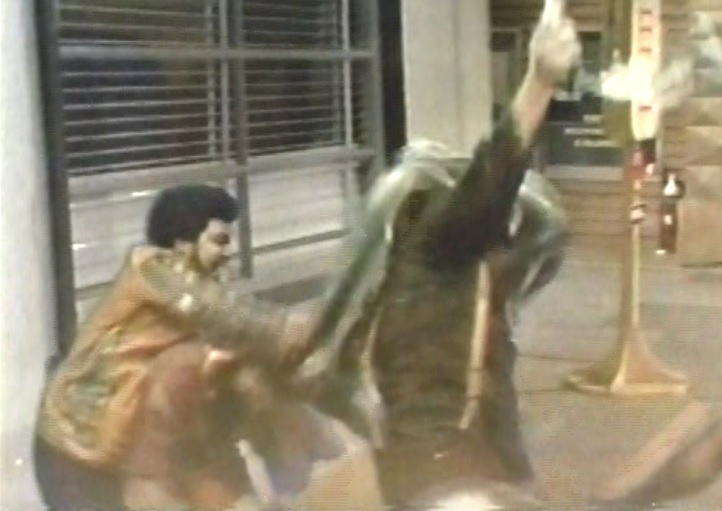
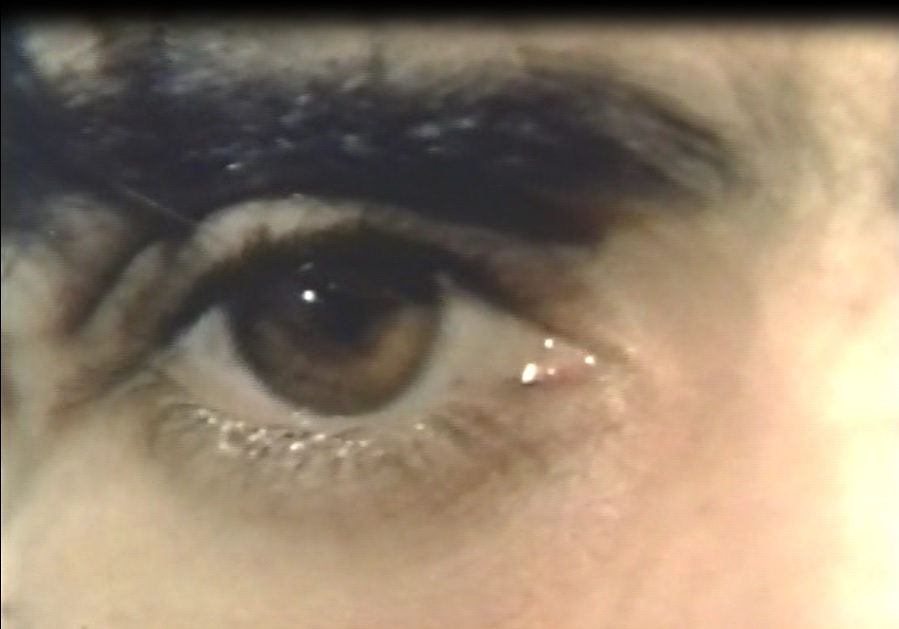
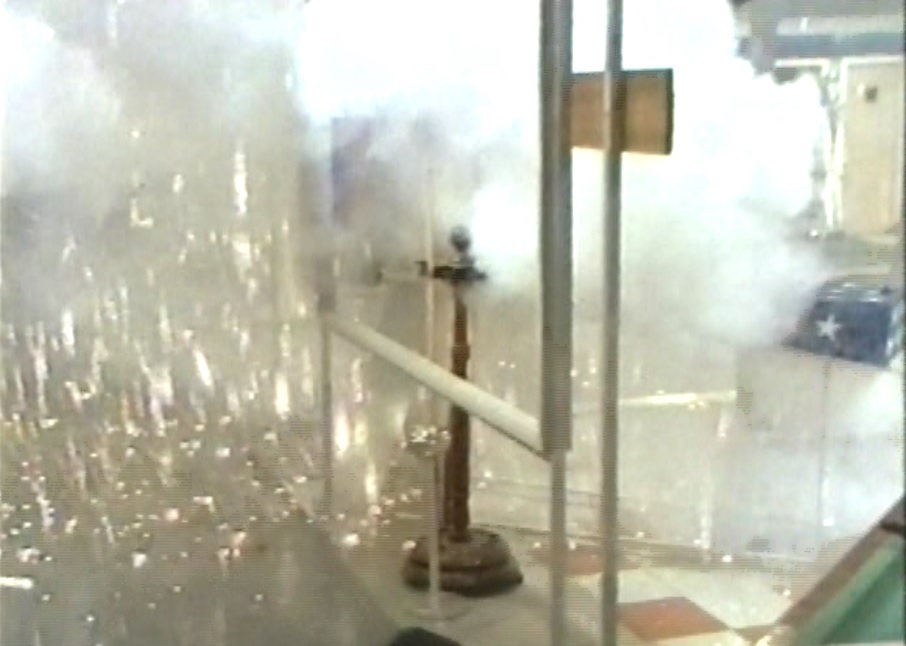
"What will this evening bring me this morning" was shot during the final hours of the filming of "200 Motels", when sets not to be used anymore could
be destructed. You can see band members having fun doing so with Zappa's eye fading in and out ("he's watching us"). At the beginning of the movie you can
see the band members complaining about him always watching and taping them behind their back, a scene of course completely directed by Zappa himself.
See the Uncle Meat section for "Mr. Green Genes" and the counterpoint #2 section for "Strictly genteel (1987)".
3) Counterpoint through multiple layers.
See below at "Dwarf nebula processional march & dwarf nebula" from "Weasels ripped my flesh".
4) Counterpoint with shifting harmonies.Sofa (1976)
Harmonic independency is very explicitly present in the following example from "Sofa" with two-part counterpoint.
This song was first included in the setlist of 1971 (see the Fillmore East section), next studio recordings appeared on "One size fits all"
from 1975 and a live version from 1976 got included in the "Zappa in New York" album (released in 1978). It's this last recording the following
bars stem from:
Sofa (1976), fragment (midi file).
Sofa (1976), fragment (transcription).
Again both melodies are in the same key, and both move harmonically independently. This is accentuated by the fact that
the two melodies, that both are repeated, are of unequal length, namely four and three bars. Thus the harmonic combinations
we are getting keep changing all the time. See the "New brown clouds" theme in the "Studio Tan" section for another example.
Like its main theme (see the Fillmore East, 1971, section) this section is in 3/4. The bass G pedal note sets the scale to G
Mixolydian. For more about the polyphonic set-up of this section, you can look at the
"Sofa (1975)" example from the One size fits all section of this study.
5-6) Free counterpoint and counterpoint in an atonal field.
The 1974 version of the "Dog breath variations" can serve as an example of free counterpoint in earlier work. See the Uncle
Meat section for a transcription. Another instance is the "Rollo interior" score, of which a section is included in the
"St. Alfonso" example from the Apostrophe (') section. The counterpoint #2 section continues with this item with three examples from
"The yellow shark" and two from "Everything is healing nicely". "Igor's boogie" from the previous section
is an example of atonal counterpoint in earlier work.
WEASELS RIPPED MY FLESH
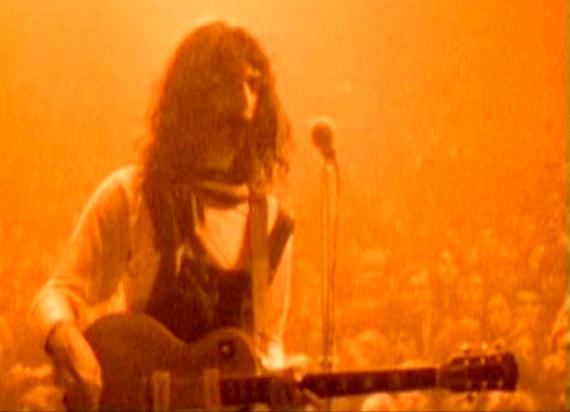 During the spring tour of 1969 it became noticeable that Zappa was becoming to feel worn out playing with the Mothers
in this form. In the press he started complaining about audiences clapping for the wrong reason and continued saying that he felt that he was banging
his head against the wall. The band was on a regular payroll and the most economical way to end the situation was
to disband the group. Zappa took this step in August, but continued working with his two best skilled musicians, Ian Underwood and Art
Tripp (the latter would soon join Beefheart's Magic band). It shows that he could be ruthless as it came to pursuing his ideas.
The story about Duke Ellington begging for an advance in The real FZ book seems awkward. More convincing is what he said in the press
directly afterwards, namely that it was time to work upon the material already recorded, rather than trying to keep doing the same
thing over and over again. With "Hot rats" in progress he was heading for new directions with session musicians and he
wanted to close the first Mothers period.
During the spring tour of 1969 it became noticeable that Zappa was becoming to feel worn out playing with the Mothers
in this form. In the press he started complaining about audiences clapping for the wrong reason and continued saying that he felt that he was banging
his head against the wall. The band was on a regular payroll and the most economical way to end the situation was
to disband the group. Zappa took this step in August, but continued working with his two best skilled musicians, Ian Underwood and Art
Tripp (the latter would soon join Beefheart's Magic band). It shows that he could be ruthless as it came to pursuing his ideas.
The story about Duke Ellington begging for an advance in The real FZ book seems awkward. More convincing is what he said in the press
directly afterwards, namely that it was time to work upon the material already recorded, rather than trying to keep doing the same
thing over and over again. With "Hot rats" in progress he was heading for new directions with session musicians and he
wanted to close the first Mothers period.
The first idea was to come up with a 12-record set, called "The collected history and improvisations of The Mothers of Invention".
His record company wasn't interested, so he advertised for it, trying
to sell the records individually by mail order. All had names by now, indicating that they went back to early pre-Mothers recordings. The next year however two albums from the set were
regularly released, leaving ten in stock. As time progressed in the seventies he lost interest in the project, saying that his current band
could do better. Even so, eventually more than the quantity of a 12-record set became available (see the next section at the bottom).
1. Didja get any onya? - Charles Ives
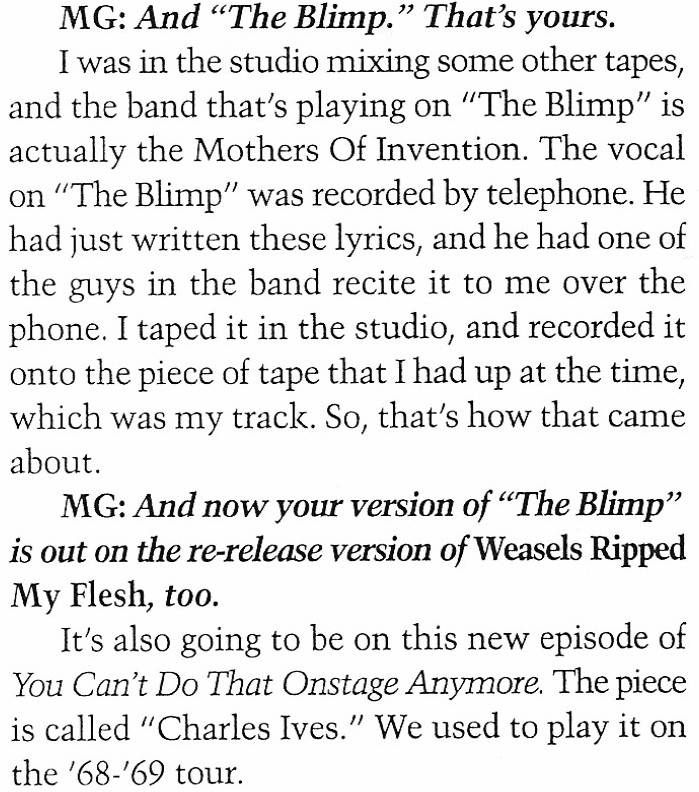 Next are some compositions that have a prescribed framework, but mostly are improvisations. First are two riffs from
"Didja get any onya?" over which the brass section improvises. Both riffs are in odd meters.
The first one is in 7/16.
Next are some compositions that have a prescribed framework, but mostly are improvisations. First are two riffs from
"Didja get any onya?" over which the brass section improvises. Both riffs are in odd meters.
The first one is in 7/16.
Didja get any onya?, opening (midi file).
Didja get any onya?, central riff (midi file).
Didja get any onya?, sections (transcription).
The scale is here F# Phrygian with the A altered to A# half of the time. Bass and keyboard form the
F#7 chord. The second one in 14/16 is also present in "Charles Ives" from "YCDTOSA Vol. V" and "The blimp" from Beefheart's "Trout mask replica" album, which
Zappa produced. To the right Zappa's comment from the Zappa! special issue by Guitar Player, page 60.
The key here is C Lydian and the accompaniment is now making a chord progression: an alternation of I and II for the keyboard
(not I in two different voicings, as I had it up to the 5th pdf edition of this study). The bass plays an A below the second D chord,
the upper note of this chord.
Charles Ives, 2:04-2:28 (midi file).
Charles Ives, 2:04-2:28 (transcription).
The "Charles Ives" composition Zappa is referring to is a variant upon the middle section from "Didja get any onya?", the section
starting with various sustained notes, moving over to the riff in 14/16. At this point the Mothers had four wind players at their disposal for playing these
sustained notes, all active here. First sustained notes are played without much accompaniment by the rhythm section. Vocal parts are included as well.
Roy Estrada sings melodically, other band members react to Zappa's hand-signalling as described below at track 3.
The example from above is the first block from "Charles Ives" with the riff. Other than on
"Didja get any onya?" the band keeps playing these sustained notes. At the end of this block, bar 12 from the example, the riff gets played in a different form.
It's a one time only bar in this block with the meter switching to 4/4. Next the sustained notes continue without accompaniment again.
2. Directly from my heart to you
"Directly from my heart to you" is a blues song by Richard W. Penniman (artist name Little Richard).
This cover features Don "Sugarcane" Harris as a guest player once more.
See the Hot rats section for an example of his violin playing.
Little Richard himself released this song as a single with the title "Directly from my heart".
By increasing the speed, the music of this song eventually evolved towards the much better known single "Lucille".
"Lucille", however, is credited to Albert Collins, who thus must have written the lyrics. The basis of the music
is standard blues, which also applies to for instance Zappa's song "Suicide chump".
3. Prelude to the afternoon of a sexually aroused gas mask - Original Mothers at the Fillmore East
"Prelude to the afternoon of a sexually aroused gas mask" is one
of the six live tracks from "Weasels ripped my flesh". The title can only be a reference to Debussy's "Prélude a l'après midi d'un faune".
Prelude to the afternoon of a sexually aroused gas mask, 1:01-1:08 (midi file).
Prelude to the afternoon of a sexually aroused gas mask, 1:01-1:08 (transcription).
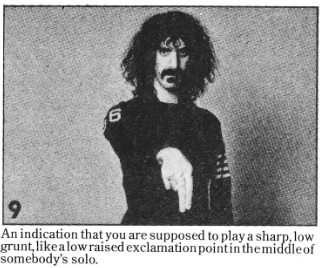 It's a collage of a number of live routines the Mothers
did in the late sixties:
It's a collage of a number of live routines the Mothers
did in the late sixties:
- 0:00 It starts off with Don Preston, being credited for "electronic effects".
- 1:01 Part in 5/16 with a little sax solo. Switching to 5/16 belonged to the standard repertoire of the band playing live.
See the Absolutely free section for Art Tripp explaining how Zappa used to indicate it. Other examples in this study are
"Prelude to King Kong", "Whisky improvisation: episode III" and "Ian Underwood whips it out", as well as the next track.
In case of "Ian Underwood whips it out" with two figures in 5/16 becoming a 10/16 meter.
While the bass is playing a pedal A, both the lead sax from staff 1 and the second sax from staff two are playing over it in a
semi-diatonic, semi-chromatic manner. In bars 1-2 the saxes are for instance mostly using notes from what you might call Db.
- 1:20 The hysterical vocal act by Roy Estrada. The band can join every now and then by singing low clusters and squeaks, following hand
signals by Zappa. Above to the left one of these signals (taken over from the Dominique Chevalier book, page 15).
- 2:55 The snorks routine, accompanied by a keyboard part (material from Tschajkovky's 6th symphony, played in a pastiche-like manner).
- 3:38 Closing chord, rushing and vibrating.
- 3:47 End.
Original Mothers at the Fillmore East, 0:00-0:13 (transcription).
Hand signalling stands central in the "Original Mothers at Fillmore East" track from "The mystery disc". It's not fit for transcribing nor for creating a midi
based upon it, so the example from above can only be an approximation. The following is happening:
- Bar 1: Play two times a G#. This is the only bar that has a genuine meter. Just before it Zappa must have been conducting the time.
- "Bar" 2: Pause.
- "Bars" 3 and 6: Sing an arbitrary high note as "hee" upon a hand signal. Here there is no real meter functioning anymore. The hand signals indicate the time.
The rhythm and pitches in the transcription are only an approximation. The first time the audience responds with laughter.
- "Bar" 4: Play a single G#.
- "Bar" 5: Sing arbitrary notes as "poo-weh" in the middle range, descending.
- "Bar" 7: Play Bb-Ab as shown in the transcription.
- "Bars" 8-10: The keyboard player can improvise little figures with arbitrary rhythms and pitches, including notes played as fast as possible.
4. Toad of the short forest (1969)
The first minute of "Toad of the short forest (1963-9)" goes back to the Studio Z
period, when Zappa was writing some music for the intended "I was a teenage maltshop" opera. Two examples are included in the Projects section.
Next you've a sax solo being played over some of the vamps Zappa applied to his live concerts. At one section a complicated polyrhythmic figure
is formed with three meters being played simultaneously. The Roxy section gives an overview of similar examples, included in this study.
In this case Zappa informs the audience about what's happening: drummer A playing in 7/8, drummer B playing in 3/4, the bass playing in 3/4,
the organ playing in 5/8, the tambourine playing in 3/4, and the alto sax is blowing its nose.
Toad of the short forest, 1:30-1:44 (midi file).
Toad of the short forest, 1:30-1:44 (transcription).
The example above contains the following:
- Bars 1-2: the section that's recorded live begins with the band playing in 5/8 (see also the previous track). The participants are:
Staff 1: Ian Underwood on alto sax. This part, "blowing its nose", is deliberately noisy, in the example only transcribed by approximation.
Staff 2: Don Preston playing a clustered chord by, I guess, pressing his hands on the keyboard (its range in the transciption isn't exact, only an indication).
Staff 3: Art Tripp as drummer A.
Staff 4: Jimmy Carl Black as drummer B, and possibly someone playing a tambourine.
Staff 5: Roy Estrada on bass.
- Bar 3-6: at the third tick of bar 3 Art Tripp switches to a figure in 7/8, playing in a different, faster, tempo.
- Bars 7-8: two bars used for making a transition from 5/8 to 3/4, probably with Zappa briefly conducting or signalling. The keyboard pauses for a while.
- Bars 9-12: the band, except for Art Tripp, is now playing in 3/4. In bar 12 the keyboard re-enters with a couple of chords, not yet in 5/8.
Toad of the short forest, 1:50-1:55 (midi file).
Toad of the short forest, 1:50-1:55 (transcription).
This second example is played a couple of bars later on, containing:
- Bar 1: continuation in the manner of bars 9-12 from the previous example.
- Bar 2: on beat three of this bar Don Preston begins playing in 5/8 some more, now in a different tempo, also faster than tempo 1 of the rhythm section.
- Bars 3-4: now you get to hear in full what Zappa is explaining to the audience a couple of seconds later on, the citation from above.
To a degree you can say this is derived from the idea by Charles Ives of letting bands play against each other, and indepedently of each other. They can use different meters, but
there will always be tempo differences. There are a few other instances of doing this. The ones that I came across get mentioned in the Absolutely free section
at "Amnesia vivace".
In case of "Toad of the short forest", with three different meters in different, rather fast, tempos, it remained a one-time only experiment. It's very difficult to transcribe the notes
and to find a way to notate them. A degree of approximation remains inevitable. To me personally, and probably also generally, it's getting too divers to be able
to consciously experience what's going on all at the same time.
5. Get a little
"Get a little" is a pedal note solo,
the solo itself largely being in E Dorian with a G as minor third. If I'm not mistaken the accompanying chord can also be major with G-sharp, thus
mingling Dorian with Mixolydian. At 1:18 it does definitely sound as Mixolydian with also the guitar playing a G#. It's an example
of a solo that has something that you might call a main theme and it has a coda:
- 0:00 Intro with people coughing and talking.
- 0:10 Statement of a theme, that gets varied upon.
- 0:36 Free improvisation.
- 2:15 Coda with a chord progression.
- 2:23 "We'll be back in a little while".
- 2:30 End.
Get a little, 1:16-1:26 (midi file).
Get a little, 1:16-1:26 (transcription).
As it comes to musical notation one has to choose between Dorian (with the G# being an altered note) and G Mixolydian (with the G natural being an
altered note). Or one can decide to modulate a couple of times. The example above has both Zappa and the accompaniment using Mixolydian during
bars 1-5. From bar 6 onwards Zappa returns to Dorian, while the accompaniment keeps using the major triad upon E. So here it's mixed.
This mingling of closely related scales occurs frequently in Zappa's music (see also the Guitar section of this study for an overview).
It happens on paper (e.g. the opening of "Echidna's arf (of you)")
and in improvised music, both by soloists and the accompaniment. Sometimes one scale dominates in a piece as a whole, sometimes two notes
appear as natural and altered in amounts that approach each other. There is a degree of choice in Zappa's music: it was allowed to switch between
closely related scales. For musicologists such behaviour is inconvenient. They like to come up with theories, formulas and overarching explanations.
Even the number of bars in compositions of Bach has been given a special meaning. Zappa kept changing his compositions all the time,
so keys can vary, the numbers of bars, the harmonies, new themes got inserted, others got removed etc. In his case it can already get difficult
to come to an accurate description of one composition. One always has to bear in mind what version you're talking about and sometimes the right
vocabulary isn't available. In case of the above there's no musical term that covers switching between Dorian and Mixolydian as you like.
6. The Eric Dolphy memorial barbecue (1969)
 Rhythmically the first "Eric Dolphy Memorial barbecue" example from below contains two strings with accelerations through
a 3/4 meter by shortening the lengths of the notes, causing many syncopes. It gets applied during bars 1-4 and bars 5-8.
To a point the second set of bars can be seen as a (character) variation upon the first set. As Ludwig writes about the second set on page 116
of his study from 1992: "In this case the hemiolas are the starting point of another peculiarity. First the bow between the last eighth note
of the hemiolas and the first fourth note of the next bar draws your attention [bars 6-7]. When following the note sequence, an acceleration
of the pulses becomes clearly notable. This effect of acceleration is not caused by speeding up the tempo, but by a rhythmic formation in the shape
of a row. It starts with two half notes, followed by two dotted fourth notes, two fourth notes, two dotted eighth notes, two eight notes, ending with
two 16th notes." Included as well below are bars 9-22 from the Ludwig study, stressing the atonal character of this piece.
Rhythmically the first "Eric Dolphy Memorial barbecue" example from below contains two strings with accelerations through
a 3/4 meter by shortening the lengths of the notes, causing many syncopes. It gets applied during bars 1-4 and bars 5-8.
To a point the second set of bars can be seen as a (character) variation upon the first set. As Ludwig writes about the second set on page 116
of his study from 1992: "In this case the hemiolas are the starting point of another peculiarity. First the bow between the last eighth note
of the hemiolas and the first fourth note of the next bar draws your attention [bars 6-7]. When following the note sequence, an acceleration
of the pulses becomes clearly notable. This effect of acceleration is not caused by speeding up the tempo, but by a rhythmic formation in the shape
of a row. It starts with two half notes, followed by two dotted fourth notes, two fourth notes, two dotted eighth notes, two eight notes, ending with
two 16th notes." Included as well below are bars 9-22 from the Ludwig study, stressing the atonal character of this piece.
Eric Dolphy memorial barbecue, 0:00-0-21 (midi file).
Eric Dolphy memorial barbecue, 0:00-0-21 (transcription).
To what extend the bass line in this song is prescribed is debatable, my best guess is that Zappa wrote out the melody with per bar a bass pedal note
(as he did in "The black page", that has been officially published). The bass player could then improvise
along this pattern. "Weasels of ripped my flesh" is an album with a lot of improvisation, estimated at 80% by Zappa himself.
But if you ask yourself if then it shouldn't be credited as a group effort, then you have to take into
account that: in all rock and jazz music the writer of the basic themes gets the credit and the soloists never, Zappa himself
is improvising on guitar, "Directly from my heart to you" is a cover and Zappa is the one directing, editing and
compiling the album. Without the prescribed and directed material it would have been a set of loose ends.
Eric Dolphy memorial barbecue, 2:57-3:11 (midi file).
Eric Dolphy memorial barbecue, 2:57-3:11 (transcription).
At 1:28 the first block with improvisations starts, followed by a reprise of the theme at 2:57. This reprise skips the first four bars from above.
Mostly this reprise is a harmonic variation. The first statement of the theme contains sustained keyboard chords per bar and lower synthesizer chords.
The harmonization during the reprise is done by the brass section, probably by overdubbing. During bars 1-4 the lead melody gets harmonized, during bars
3-6 you can (also) hear lower melodic lines, a mild form of counterpoint.
Eric Dolphy memorial barbecue, 4:49-4:58 (midi file).
Eric Dolphy memorial barbecue, 4:49-4:58 (transcription).
The reprise of the theme ends at 4:29, after which a second improvisation block begins, lasting till the end of the song. From this second block
I'm showing an outtake, that's another example of applying polyrhythms. Bars 1-3 are once more an instance of applying the 5/8 meter. The brass lets a lower
note being followed by a very high note, thus using huge intervals. In bar 4 the rhythm section switches to 2/4 with off-beat drumming, with a 2/4
bar lasting as long as a preceding 5/8 bar. The brass continues with the two notes with large intervals, as if still in 5/8. By notating it in 2/4 I had to use
quintuplets to visualize this. Things like this you don't do when just improvising, you have to practice the idea of it in advance. This also goes for
the improvised part of "Toad of the short forest", the examples from above.
"The Eric Dolphy memorial barbecue" is a tribute to jazz player and composer Eric Dolphy, who died early in 1964 because of diabetes problems, not diagnosed before then.
Above to the right an outtake from a photo by Jan Persson. In 1988 the band played "The Eric Dolphy memorial barbecue (1988)"
live with improvisations including Zappa using his synclavier on stage. See the corresponding section for two examples.
7. Dwarf nebula processional march & dwarf nebula
"Dwarf nebula processional march & dwarf nebula" from "Weasels ripped my flesh" opens with an interesting counterpoint showpiece, where
several (sped up) melodies are played simultaneously in different combinations. The first four melodies are given beneath:
Dwarf Nebula (midi file).
Dwarf Nebula (transcription).
They are subsequently played in the following combinations: A-B, A-C, A-B and A-C-D. Theme A is permanently present and moves from the A chord towards the
F#m chord, leaving it a bit in the middle whether you should see A or F# as key note. Though all melodies use the scale
of A (or F# minor) with a few alterations, their harmonic and rhythmic movements are more independent of each other,
giving the melodies more individuality than in the Sofa example from above. Melody A is an easy folk tune like one, opening
with I-V (no 5th)-VI 5th in A. Melody D is harmonically the most exotic one, opening for instance with what you might call a 9th
chord on C sharp (C#-E-D) and a chromatic passage. The combination of these two openings can't be called harmonically complementary.
It's an example of Zappa saying I can do whatever I want as it comes to harmony and counterpoint, and still the result becomes
a logic sounding unit. Rhythmically melody B opens with several syncopes.
8. My guitar wants to kill your mama
Next is an example from "Weasels ripped my flesh" (1970), where Zappa includes an atonal section in an interlude for a rock song. The construction of track 8 from this CD,
"My guitar wants to kill your mama", gets described below. It begins with ticking rapidly on the G chord without the 3rd, a standard from the fifties
comparable to the opening of "No, no, no". The lyrics also follow rock song topics, rather than being related to Zappa's own life (unless I've missed
something in the biographies).
The opening is
ambiguous about its use of scales. In a wider context it should be seen as G Dorian, because the same set-up is used for the verse and refrain, appearing
five times in total. The opening however mingles G Dorian for the sung part with G Mixolydian for the accompaniment, because both the Dorian Bb and the Mixolydian
B are used. Specific for the opening is that Zappa puts an F beneath it as pedal note, while the sung part and the accompaniment are on G.
All other instances are on G for everybody. The other official "My guitar" version
from "YCDTOSA IV" doesn't have this lower note beneath it neither. There both the bass and melody begin in D Dorian. If you do take the F as keynote nevertheless, the opening
would be in F major mingled with
F Lydian, but seen the general construction of this song it can better be taken as an incidental variation.
Verse
- 0:00 Phrase 1 ("You know ..."), as described above.
- 0:26 Phrase 2 ("I get ..."). The song moves over to step IV of G Dorian, equal to step I of C Mixolydian for its continuation in phrase 3.
My guitar wants to kill your mama, 0:00-0:28 (midi file).
My guitar wants to kill your mama, 0:00-0:28 (transcription).
- 0:30 Phrase 3 ("I call ..."). C Mixolydian, now modulating briefly to D Mixolydian by moving up a second via parallels.
Refrain
- 0:34 Phrase 1 ("My guitar ..."), G Dorian.
- 0:43 Phrase 2 ("My guitar ..."), step IV or C Mixolydian.
- 0:48 Phrase 3 ("I get ..."), D Mixolydian.
- 0:50 The melody modulates back to G Dorian.
Verse
- 0:52 Phrase 1 ("Later I ..."), G Dorian.
- 1:09 Phrase 2 ("I get ..."), step IV or C Mixolydian.
- 1:14 Phrase 3 ("I crawl ..."), D Mixolydian.
Interlude
- 1:18 Section 1. Bar 1 of the transcription below is the last one from the previous verse. It gets followed by a bridge of three instrumental sections, that are unrelated
to each other and the central themes, thus forming a little collage. Only a few of notes/chords facilitate the transitions. From bar 1 to 2 only the
bass D pedal note continues for letting the interlude segue. Here it gets atonal and very irregular with intervals changing all the time (it's sometimes hard to hear the exact notes).
Rhythmically it begins off-beat in bar 2, moving over to mostly
on-beat for the next three bars. Two instruments are playing fast in high registers, so it has to be sped up to double speed.
- 1:27 Section 2. A melody in B minor. Due to the fact that the last two chords from the previous theme are relatively long held, this theme can begin
as good as overnight. It's another example of a short irregular through-composed melody that can be following both
traditional and untraditional chords. Beat 1 of bar 6 could for instance be interpreted as VII 9th and beat 3 as I 7th.
My guitar wants to kill your mama, 1:16-1:34 (midi file).
My guitar wants to kill your mama, 1:16-1:34 (transcription).
- 1:36 Section 3. Guitar solo in A Mixolydian.
Verse
- 1:53 The verse repeats like at 0:52.
Refrain
- 2:19 The refrain repeats like at 0:34.
Outro
- 2:36 Guitar solo in G Dorian.
- 3:32 End.
9. Oh no (1969)
The score of "Oh no" is available in The Frank Zappa songbook, vol. I, pages 57-58. It's the version with lyrics.
The opening of the instrumental version of "Oh no (1967)" is included in the Lumpy gravy section of this study.
Bars 1-6 from the example below contain the end of "Oh no" as it is present in the Songbook. Zappa kept re-shuffling his material almost indefinitely.
Confusing is that the second theme from below, bars 7-10, is sometimes part of "Oh no", and sometimes gets interpreted as the introductory theme for the next song.
On "Lumpy gravy" it's present in both manners as part of "Oh no" (index number 3) and as the opening theme of "At the gas station" (index number 10).
On Weasels ripped my flesh it's part of "Oh no", but you might also call it a transitory theme for the next "The Orange County lumber truck"
track. And it is this theme that returns in a different shape as the first theme from "Son of Orange County" from the later "Roxy and Elsewhere" album.
Oh no, 1:16-1:35 (midi file).
Oh no, 1:16-1:35 (transcription).
Like the 1967 edition, "Oh no" shows some indecision about being in E minor or E Dorian. The C turns up as both natural and sharp. In this example
it starts in E minor, so I've notated it as if in E minor on this occasion. Other than my example from "Oh no again/At the gas station",
the second theme in 5/4 continues with the same tempo. The key changes to C# Dorian with the bass (and keyboards) playing a I-IV alternation per bar.
Continued at "Son of Orange County" in the Roxy and Elsewhere section, where you can find a transcription
of the 1974 version of the second theme from above.
10. The Orange County lumber truck
"The Orange County lumber truck" knows a number of themes and episodes:
- 0:00 Theme 1 in F# Dorian. The basic chords are F#m7 and G#m7. The bass begins with F# at this point.
- 0:15 Mini solo in C# Dorian, played over a C#m-D#m alternation. The meters switch from standard 4/4 to
a 6/8-6/8-2/4 sequence, played three times.
The Orange County lumber truck, 0:00-0:20 (midi file).
The Orange County lumber truck, 0:00-0:20 (transcription).
- 0:26 Theme 2 in A Lydian with A and B as accompanying chords.
- 0:45 Second mini solo over the C#m-Dm alternation. Zappa largely avoids the A/Ab during these two mini solos, turning
up only once at 0:53, being natural. The C#m and D#m chords at some points get played as just the thirds,
at other points as complete triads.
- 0:58 Theme 2.
- 1:01 Theme 2 transposed down to G Lydian.
- 1:05 Theme 1 beginning as if transposed up to A, but harmonized differently, using A Mixolydian.
The basic chords are now A9 and Bm11.
The Orange County lumber truck, 1:05-1:12 (midi file).
The Orange County lumber truck, 1:05-1:12 (transcription).
- 1:21 G#m-C# alternation (G# Dorian), followed by Bm-E (B Dorian).
- 1:34 Guitar solo, beginning with the band just playing the F#m chord. See the next track below.
- 3:17 The solo gets cut off for human voices.
- 3:20 End.
11. Weasels ripped my flesh
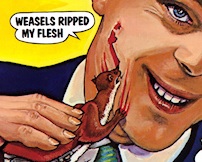 During the Berlin concert of 1968 the rebellious student audience tried to climb on stage and Zappa
asked Don Preston to press all keys to scare off the crowd. The incident exists on film and was presented in L.A. colleges
as part of the short "Burnt weeny sandwich" movie (still above in this page). Apparently Zappa liked the effect, so they could do it again during
normal concerts.
Don already used a rushing sound in the examples below and by clustering
the keys you get the big blast of rush with feedback as on "Weasels ripped my flesh". It follows upon a guitar solo that
gets cut off
and its shock effect never fails. The midi file below contains the chord cluster, but not the irregular feedback effects that make this
piece so horrific.
During the Berlin concert of 1968 the rebellious student audience tried to climb on stage and Zappa
asked Don Preston to press all keys to scare off the crowd. The incident exists on film and was presented in L.A. colleges
as part of the short "Burnt weeny sandwich" movie (still above in this page). Apparently Zappa liked the effect, so they could do it again during
normal concerts.
Don already used a rushing sound in the examples below and by clustering
the keys you get the big blast of rush with feedback as on "Weasels ripped my flesh". It follows upon a guitar solo that
gets cut off
and its shock effect never fails. The midi file below contains the chord cluster, but not the irregular feedback effects that make this
piece so horrific.
The Orange County lumber truck - Weasels ripped my flesh, transition (midi file).
The Orange County lumber truck - Weasels ripped my flesh, transition (transcription).
The transcription contains the end of the solo, that concludes "The Orange County lumber truck".
It's in 4/4 in the key of F# Dorian. It gets cut off precisely at the end of a meter. After this everything continues without
a meter. First you can hear some people laughing and coughing for some seconds, next the big dissonant chord follows, sustained for two minutes.
"YCDTOSA Vol. V" is additional to "Weasels ripped my flesh" with a lot of experimental stuff,
conversations and improvisations. The next section continues with titles from that specific CD. To the right an outtake from the fantastic drawing by Neon Park, illustrating the pacific
beauty of several of the album's themes, getting brutally ended by a weasel ripping your flesh.
